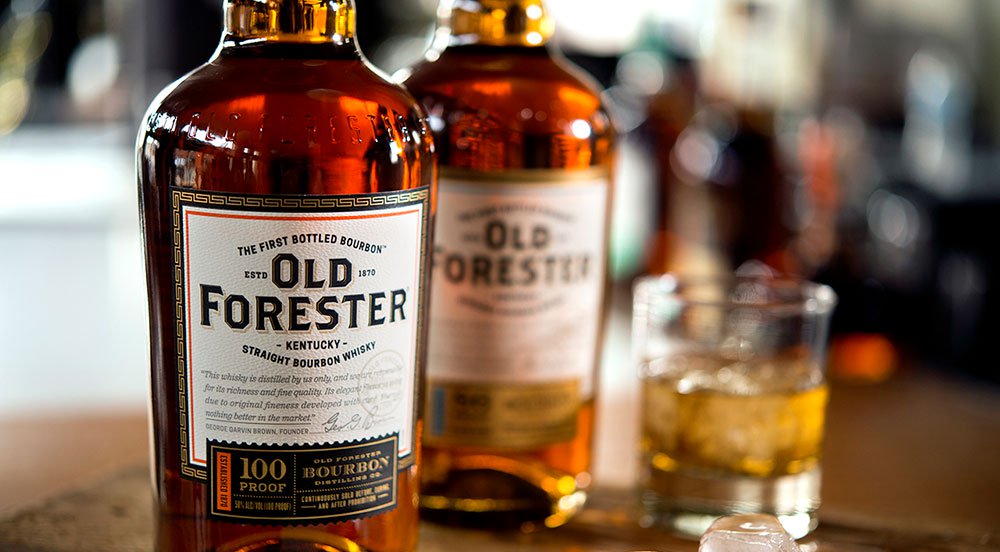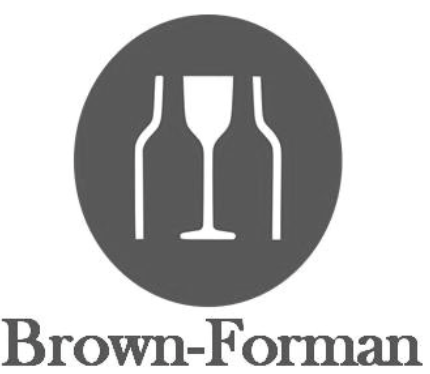
Dr. William Forrester
“A Surgeon in Search of Purity”
Old Forester is the flagship brand of Brown-Forman, named after the Civil War surgeon Dr. William Forrester. It was the first bourbon to be bottled successfully and labeled as a medicinal bourbon by George Garvin Brown when he was a pharmaceutical salesman. It has always been sold at 100 proof.
Dr. William Forrester was born in August 1836 in Valley Station, Kentucky. He was the son of William Forrester, who was a Louisville physician. Forrester’s father died when he was nine years old in March of 1846. The elder Forrester’s will bequeathed one-third of his estate to his wife, Eliza, and the balance to his children, Louisa, John, and William. Eliza died less than two years later; the cause of her death is still not known, but family friend Joshua Frye Speed was the executor of the estate. After his mother’s death, young William lived with and was raised by Mr. and Mrs. Joshua Speed, who had no children of their own.
After attending the public schools of Louisville and graduating with honors from Male High School, William enrolled at the University of Louisville to study medicine. He graduated at the head of his class in 1862 and entered private practice in Louisville. In March of 1862, he entered the Union Army as Assistant Surgeon of the Fifth Kentucky Cavalry. On April 22, 1863, he was promoted to Head Surgeon.
Forester’s unit was involved in the Battle of Perryville, the Battle of Stones River, the Tullahoma Campaign, the Battle of Lookout Mountain, and the Battle of Chattanooga. On September 20, 1863, his Brigade descended from Lookout Mountain into the valley to the rear of the Confederate Army. It would be weeks and cost thousands of lives. They were immediately attacked by a superior force under Confederate Major General Joe Wheeler. During the disorderly retreat in the Battle of Chickamauga, he and his six officers were captured at McLemore’s Cave. All were placed in Libby Prison at Richmond, Virginia. Libby was a tobacco warehouse used mostly to house Federal officers. It was frequently overcrowded, housing at times as many as 1200. The suffering and death rates were very high.
He was released from the prison on November 24, 1863, when an exchange of non-combatants was made with the Confederate Army. He returned to his Regiment on December 27, 1863. He was with his Regiment in many engagements, caring for the wounded on the field. Although he narrowly avoided being hit many times he was never wounded.
On April 26, 1876, William Forrester was married to Fannie Armestead (witnessed by Joshua F. Speed). The younger William Forrester became a prominent Louisville surgeon of the time and was also a very consistent buyer of George Brown’s whiskey.
George Brown spent time as a clerk at Henry Chambers & Company and later a salesman for them. Brown had been a pharmaceutical representative who actually called on physicians’ offices between 1867-1870. He and Dr. Forrester were neighbors and frequently dined at the Louisville Hotel. In those days, there were very few medicines. Whiskey was still the major domestic anesthetic in the late 1800s, but also served as a tonic, a pep pill, and/or even a tranquilizer.
Another of Brown’s friends, Dr. James Holloway, complained of the inconsistency of batches of whiskey he received; some were excellent, some fair, and some batches were very bad. He and Dr. Forrester believed a brand should be available that was always of the highest quality that could be prescribed to his patients. Brown was determined to accomplish that goal, and he was going to name his whiskey Old Forrester. Brown blended every drop himself, and all of it was sold in clear glass bottles so the customer could see what he was getting.
In 1874, about four years after it was introduced on the market, it was determined that one of the “r’s” should be dropped in the name. The reason was simple: more people knew a Forester with one “r” and it would be easier to market. Also, because he was so well known locally, other physicians may have been reluctant to prescribe a medicine that marketed the name of one of their friendly competitors. Perhaps even Forrester had second thoughts about the use of his name for a bourbon.
Old Forester was not the very first whiskey to be sold in bottles. E.G. Booz, a Philadelphia distiller, sold his whiskey in bottles for a brief period but stopped because the hand-blown bottles were way too expensive. Old Forrester in a bottle was an immediate success. Many unsolicited endorsements came from doctors. One advertisement in the Louisville Courier depicted a family doctor giving a patient a glass of Old Forester, which was captioned “The Doctor’s Choice.”
Forrester continued to practice medicine however, his health began failing, and on December 29, 1892, he filed a “Declaration for Pension of a Soldier.” In late July of 1909, he became seriously ill. Three weeks later, on August 15, 1909, William Forrester died of dysentery in his home on South Floyd Street. He was buried in the prominent Cave Hill Cemetery in Louisville
Contributed by Colonel CRaig Duncan, Columbia, Tennessee
Old Forester was the first Bourbon ever sealed in a bottle by named after Louisville Surgeon Dr. William Forrester. Beginning in 2015 Brown-Forman released the “Whiskey Row Series” with a different recipe each year for four years. The first release is exactly the same recipe that George Garvin Brown used in 1870. Pictured above from left to right; Old Forester 1870 Original Batch (Red Tax Stamp, 90 Proof), Old Forester 1897 Bottled-in-Bond (Green Tax Stamp, 100 Proof), Old Forester 1910 Old Fine Whiskey (Light Blue Tax Stamp, 93 Proof), and Old Forester 1920 Prohibition Style (Teal Tax Stamp, 115 Proof).
Old Forester’s Signature line of brands (pictured above from left to right); Old Forester (Flagship brand, 86 Proof), Old Forester Signature (100 Proof), Old Forester Signature (old packaging), Old Forester Mint Julep (Flavored Whiskey, 60 Proof), Old Forester Statesman (from the Kingsman Movie Series, 95 Proof), Old Forester Single Barrel (90 Proof), Old Forester Birthday Bourbon (a new Version released on George Garvin Brown’s Birthday each year).
Banner photo by Old Forester






